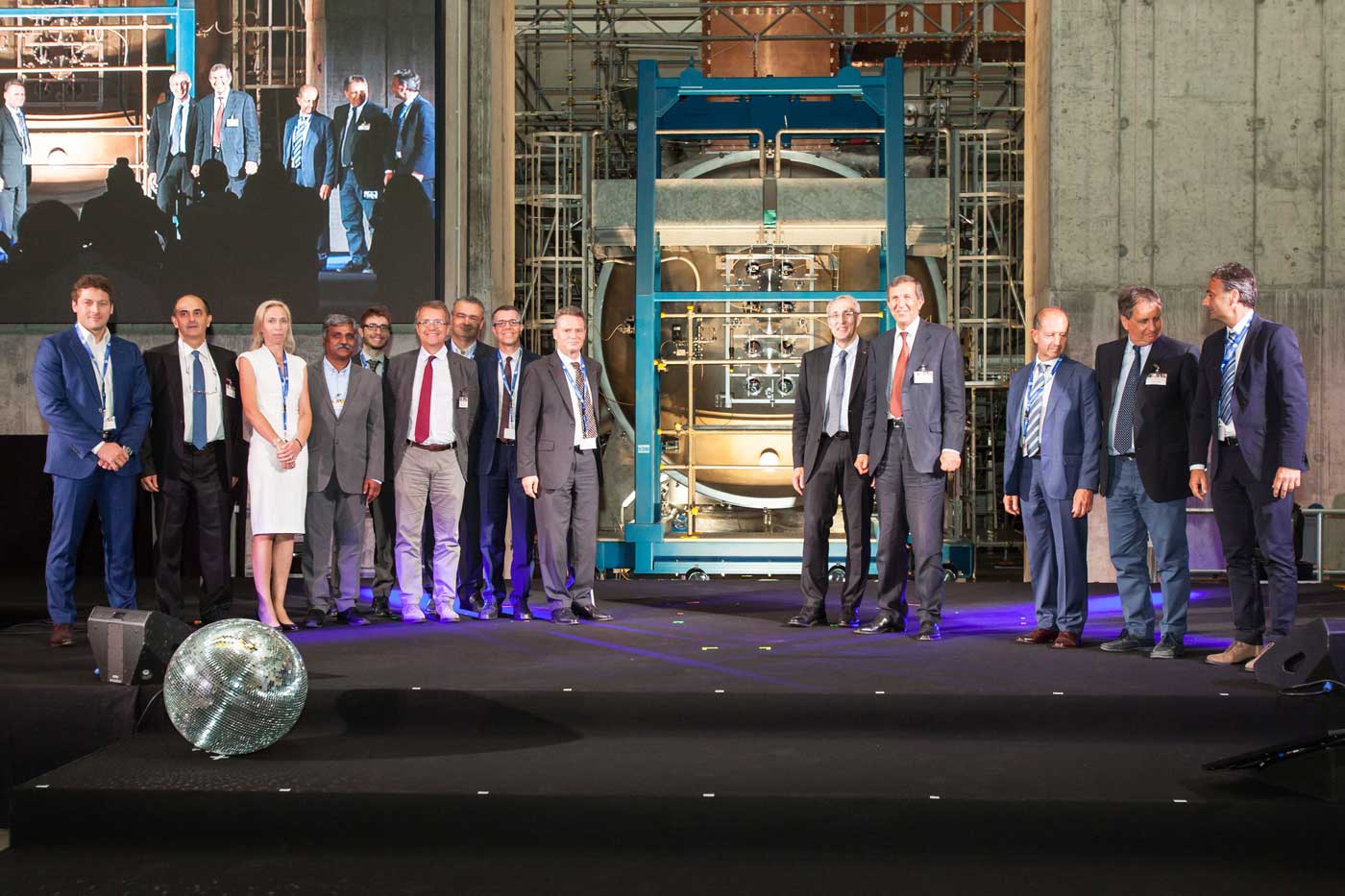The world’s largest negative ion source officially launched to much fanfare last month, heralding the start of a historic experiment in which OCEM Power Electronics is playing a key role.
A string ensemble played Vivaldi’s “Gloria” as a flash of light on a screen confirmed that the SPIDER was fully operational at the Consorzio RFX in Padua. SPIDER is a test bed for the neutral beam injectors being created for ITER, a research facility currently under construction that will be the world’s largest experiment dedicated to developing fusion energy as a clean and abundant power source.
OCEM is supplying four Ion Source and Extraction Power Supplies (ISEPS): one for SPIDER, a 1:10 scaled test bed for the ITER neutral beam injectors; one for MITICA, a full-size test bed for the neutral beam injectors; and two ISEPS systems for the neutral beam injectors that will be built on-site in Cadarache, France.
SPIDER and MITICA are being housed at the ITER Neutral Beam Test Facility at the Consorzio RFX facility in Padua, Italy, where OCEM General Manager Giuseppe Taddia was one of five guests who spoke before an audience of about 350 people gathered to witness the flash of SPIDER’s first plasma.
The room burst into applause in recognition of the significant achievement in international collaboration — and the jump forward in existing technological capability — that made the SPIDER project a success.
“We are very proud to have contributed to the Neutral Beam Test Facility, and to the ITER device,” Taddia said. “We have worked for many years in the Big Physics market, and have developed a passion for helping make fusion energy a reality.”
Fusion occurs when two lighter atomic nuclei are subjected to high heat and pressure, and fuse to form a heavier nucleus. This fusion reaction produces a large amount of energy that can then be converted into electricity.
Fusion, however, can only take place when the gases have entered an electrically charged state of matter called plasma. To achieve fusion, the plasma must be heated to about 150 million degrees Celsius. These extreme temperatures are achieved by a combination of heating methods, one of which is called a “neutral beam injector.”
ITER will have two neutral beam injectors that inject high-energy particles of the same kind present in the reactor, using a series of steps to create, accelerate and finally neutralize the ions so they enter the plasma with high energy and produce heating.
The ISEPS systems power the first two stages of the neutral beam injector: the ion source and the extraction grid. The ion source generates a cloud of negative Deuterium ions, which are then extracted and accelerated using electrical fields. Since the plasma itself is electrically charged, the ions have to be neutralized — or stripped of their charge — before entering. Otherwise the particles would be deflected due to repulsion forces.
“ISEPS is a complex system integrating many things, all controlled, organized and managed together in a very fast way under very specific technical and quality requirements,” Taddia said.
ITER’s incredible size poses several new technical challenges. First, the particle beams have to be much thicker and the individual particles much faster than existing systems in order to travel far into the plasma’s core. Second, the injectors must operate for up to 3600 seconds and deliver beams of 16.5 MW, with particle energies of 1 MV.
Participating in ITER — which is both an acronym for International Thermonuclear Experimental Reactor and Latin for “the way” — has not only given OCEM an opportunity to demonstrate its technical capabilities, but has been a source of invaluable project and quality management experience.
“This project has taught us to interface with numerous entities and to meet the needs of all of our partners,” Taddia said at the June 11 SPIDER launch event. “It has helped us grow in the right way in terms of documentation, supply chain management, project execution and scheduling.”
Other speakers included ITER General-Director Bernard Bigot, Consorzio RFX Pres. Francesco Gnesotto, European MEP Flavio Zanonato, the European Commission’s Carles Dedeu i Fontcuberta, and Salvatore La Rosa from the Italian Ministry for Education, University and Research.
OCEM is now hard at work on the ISEPS system and on the Residual Ion Dup Power Supply for MITICA, and is excited to support the future success of ITER.
OCEM Power Electronics
Since 1943
